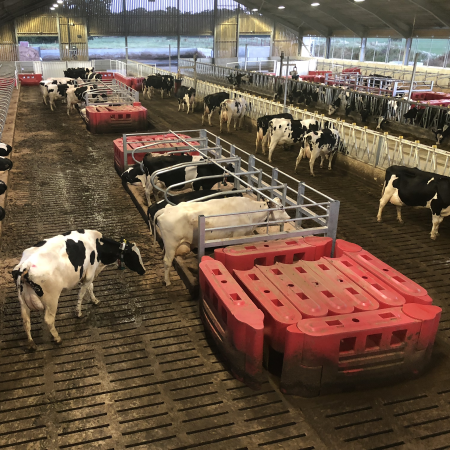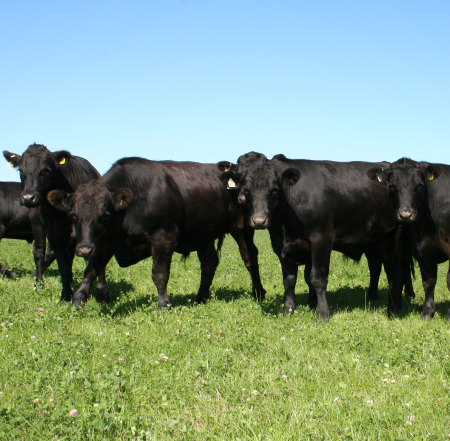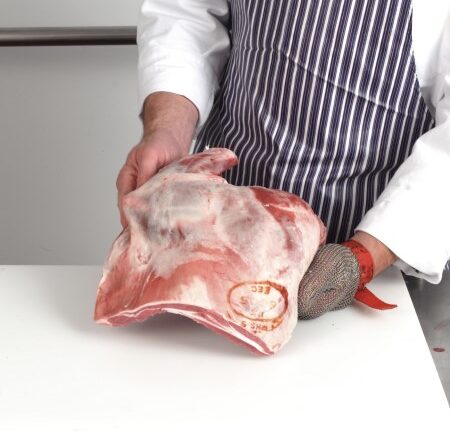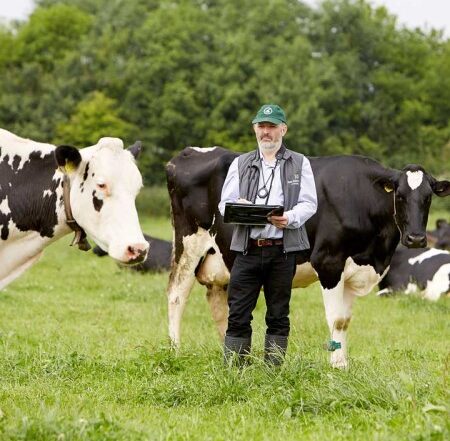CIEL | Case Study: Providing the space to enhance the health, welfare and productivity of dairy cattle
Genetics | Reproduction | Behaviour | Nutrition | Health & Welfare | Productivity | Food Integrity | Environmental Impact
Challenge
Housing conditions have the potential to affect health and well-being of cows by exposing them to different biological, chemical, and physical hazards. Almost all UK dairy cows are housed during winter months and an increasing number of farms are committing to year-round indoor-housing management systems. A new on-farm measurement for dairy cow buildings highlights value of ‘living space’ vs loafing space for adult cows.
Living space, a bespoke definition, includes the additional space available for dairy cattle above the baseline requirement for movement and feeding, excluding lying areas. It accounts for wider passageways and additional outdoor areas and therefore provides a useful estimate of true available space.
Action
The trial is being carried out within the University’s Centre for Dairy Science Innovation (CDSI). Co-developed by CIEL, the CDSI is at the forefront of research into the health, nutrition and welfare of dairy cows and calves, offering flexible accommodation to support a range of research studies.
Researchers will assess and compare reproduction (calving to conception time), production (yield and milk solids), behaviour (utilising sensor technology to monitor use of space), and health and disease (lameness and mastitis incidence).
Researchers at the University of Nottingham believe living space is a better way to measure cow space than the traditional definition of loafing area, citing its ambiguous definition and a lack of industry consensus. This is supported by a study led by PhD student Jake Thompson to explore current housing of dairy cows across Great Britain, with specific focus on understanding the practices and variability associated with space allowance. A further aim was to explore farmer opinions and knowledge on the value of living space.
Jake visited 50 randomly selected farms in GB during the winter housing period of 2017/18 to investigate how much space housed dairy cows were being given. During visits he measured milking cow accommodation, captured farm management information, and farmer opinions on space allowances.
The AHDB-funded study found that farmer definitions for loafing areas and their opinions of loafing space importance were hugely variable across the country. Farmers identified loafing space as essential for cow welfare, but definitions of space varied significantly.
The results of the survey led Jake to conclude living space was a better measurement for the dairy industry to use because it makes it easier to compare space across farms with different housing set ups. To ascertain what difference space actually makes to cow welfare, the research team is now in the process of comparing two groups of cows: one group given 3m2 of living space per cow and another group given double this.
Impact
The study is the first worldwide to quantify variability in loafing and living spaces for dairy herds. A freely available online calculator has been developed to aid industry personnel to calculate living space easily and allow comparisons with other UK farms. Further research will help evaluate the extent to which variation in quantity and quality of space influences cow health, welfare, and productivity, as well as farm economics and emissions.







